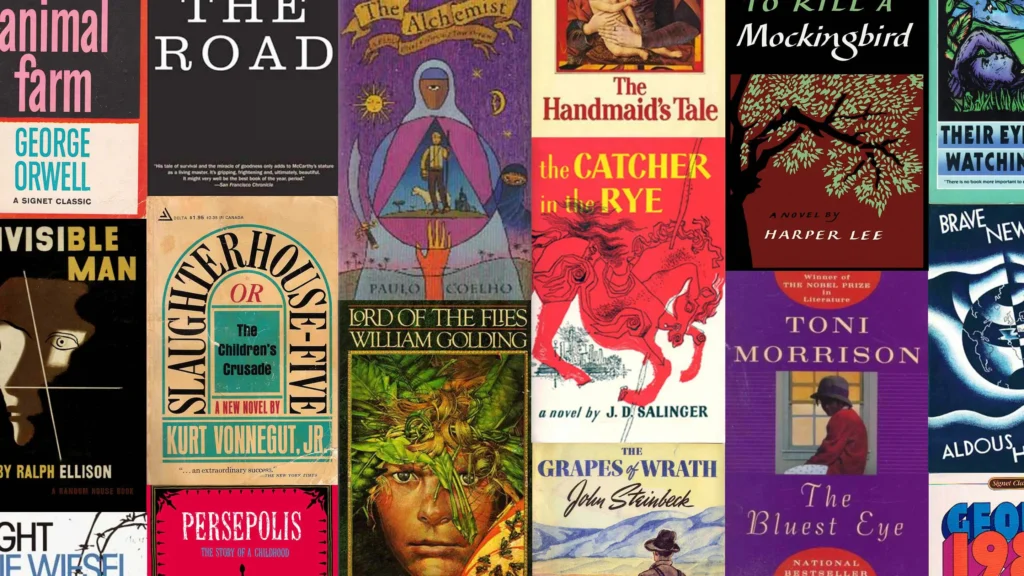The epistolary form of writing, where stories are Epistolary Works told through letters, diary entries, or other personal documents, has a unique charm and intimacy. It allows readers to peek into the characters’ thoughts and feelings, making the narrative more engaging and personal. Here, we explore ten must-read classic epistolary works that have stood the test of time and continue to captivate readers with their distinctive storytelling style.
1. Dracula by Bram Stoker
Published in 1897, Dracula is a gothic horror novel that tells the story of Count Dracula’s attempt to move from Transylvania to England. The narrative unfolds through a series of journal entries, letters, newspaper articles, and ships’ log entries. This format heightens the suspense and horror as readers piece together the mystery from multiple perspectives.
2. Frankenstein by Mary Shelley
Another gothic masterpiece, Frankenstein (1818), is narrated through a series of letters written by Captain Robert Walton. These letters recount the tale of Victor Frankenstein and his monstrous creation. The epistolary format adds layers of credibility and emotional depth to this chilling story of ambition and consequence.
3. The Color Purple by Alice Walker
Winner of the Pulitzer Prize, The Color Purple (1982) is an epistolary novel composed of letters written by Celie, a young African American woman in the early 20th century American South. The letters, addressed to God and later to her sister Nettie, reveal Celie’s struggles and triumphs, offering a poignant exploration of race, gender, and resilience.
4. Dangerous Liaisons by Pierre Choderlos de Laclos
Published in 1782, Dangerous Liaisons is a French novel that unfolds through letters exchanged between the main characters. The epistolary style effectively portrays the manipulative and deceitful nature of the aristocratic protagonists, making the novel a riveting study of morality and power.
5. 84, Charing Cross Road by Helene Hanff
This charming epistolary work chronicles the 20-year correspondence between Helene Hanff, a New York writer, and Frank Doel, a London bookseller. Published in 1970, 84, Charing Cross Road is a heartwarming account of friendship and a shared love for books, bridging the gap between two different worlds.
6. Lady Susan by Jane Austen
An early and lesser-known work by Jane Austen, Lady Susan is an epistolary novella that showcases the witty and manipulative character of Lady Susan Vernon. Through the letters exchanged between the characters, Austen crafts a satirical and insightful commentary on social mores and relationships.
7. We Need to Talk About Kevin by Lionel Shriver
Published in 2003, We Need to Talk About Kevin is a modern epistolary novel consisting of letters from Eva Khatchadourian to her estranged husband Franklin. The letters delve into the troubling behavior of their son, Kevin, leading up to a devastating act of violence. The intimate format provides a deep psychological insight into the characters and their tragic story.
8. The Sorrows of Young Werther by Johann Wolfgang von Goethe
This 1774 novel is a seminal work of the Sturm und Drang movement. The Sorrows of Young Werther is told through a series of letters from the protagonist, Werther, to his friend Wilhelm. The letters vividly express Werther’s unrequited love and existential despair, making it a powerful exploration of emotion and Romanticism.
9. Diary of a Young Girl by Anne Frank
One of the most famous diaries ever published, The Diary of a Young Girl (1947) is Anne Frank’s firsthand account of hiding from the Nazis during World War II. Written as a series of diary entries, it provides a poignant and personal glimpse into the life and thoughts of a young girl during a dark period in history.
10. Pamela, or Virtue Rewarded by Samuel Richardson Epistolary Works
Considered one of the first English novels, Pamela (1740) is an epistolary novel that tells the story of a young maidservant’s resistance to her master’s attempts at seduction. Through her letters to her parents, Pamela’s character and virtue are vividly portrayed, making it a pioneering work in the novel form.
Conclusion
These ten classic epistolary works offer a diverse range of stories and styles, each utilizing the format to enhance the narrative and connect with readers on a personal level. From gothic horror to heartfelt memoirs, the epistolary form continues to be a powerful tool in literature.
For more literary explorations, consider delving into GEORGE ORWELL BOOKS, which, while not primarily epistolary, offer profound insights into human nature and society. Also, if you’re looking for recommendations beyond literature, check out HIGH ENERGY BISQUITS for a nutritious snack, IT MART for tech needs, and hmaramart for a variety of products. For thought-provoking non-fiction, explore works by Jordan B. Peterson.








